The Dawning of the Age of Spatial Computing
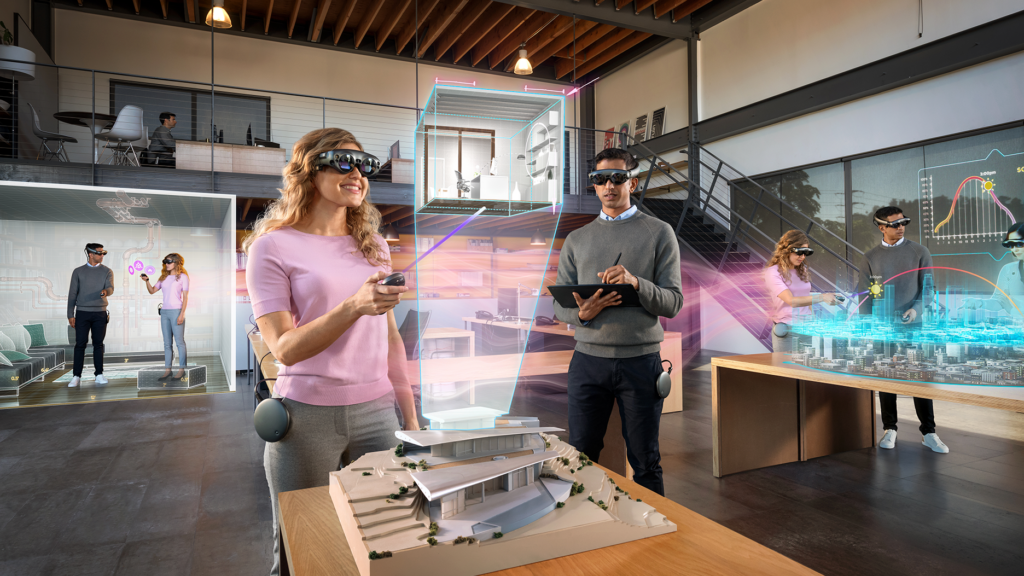
We stand at the precipice of a technological revolution that will fundamentally alter how we interact with computers and access information. Spatial computing and its related enabling technologies like Artificial Intelligence (AI), Augmented reality (AR), Virtual reality (VR), Extended reality (XR), and mixed reality (MR) are converging to produce digital experiences grounded in the physical world.
Spatial computing takes advantage of human spatial reasoning abilities by embedding the user interface into our natural environments. This effectively makes the computer disappear and prominently projects digitally enhanced information into the user’s sensory sphere. The possibilities span from subtly accentuating our everyday reality to fully immersive alternate worlds.
As this suite of spatial computing-based technologies matures, businesses across industries will harness its capabilities to increase productivity, tap new revenue streams, and provide engaging customer experiences. Companies that embrace spatial computing now will have a first-mover advantage. The laggards risk losing relevance in an increasingly digitized economy.
What Exactly is Spatial Computing?
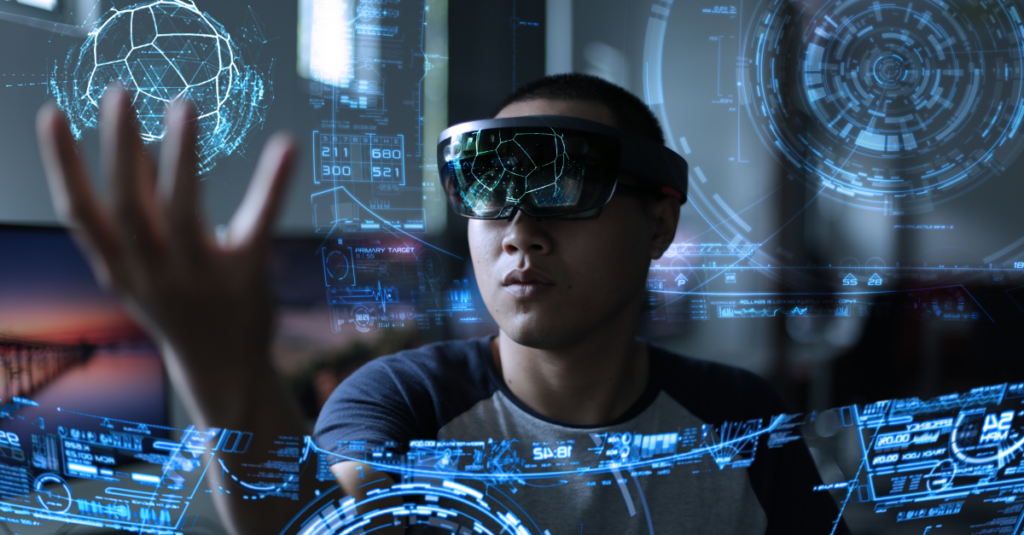
Spatial computing broadly refers to computing interfaces embedded in the local environment with which users spatially interact. This moves beyond stationary screens and keys to leverage the space around us as the medium through which we provide input and receive digitally augmented output.
Human verbal communication and nonverbal body language have inherent spatial components when face-to-face. Spatial computing aims to digitally enhance these spatial cues even when interacting with remote users or artificial systems.
The technologies enabling these spatially-situated computing experiences include:
- Augmented Reality (AR) overlays digital information onto the physical environment. An AR experience responds to user actions and environmental conditions in real-time.
- Virtual Reality (VR) immerses users in a completely virtual environment shut off from the physical world. Users engage with the virtual world through natural movements.
- Mixed Reality (MR) seamlessly blends real-world and digital objects. MR leverages environmental mapping to enable shared digital/physical experiences.
- Multimodal interfaces allow users to engage through touch, natural language, and spatial gestures instead of just typing and tapping screens.
- AI and computer vision empower devices to perceive and comprehend physical spaces and human movements.
The common theme is enabling more intuitive and responsive spatial interactions between humans and computers. Spatial computing marks a paradigm shift in human-computer interaction (HCI) comparable to the leap from punch cards to keyboard input and from mouse pointers to multi-touch.
How Spatial Computing Will Revolutionize Our World?
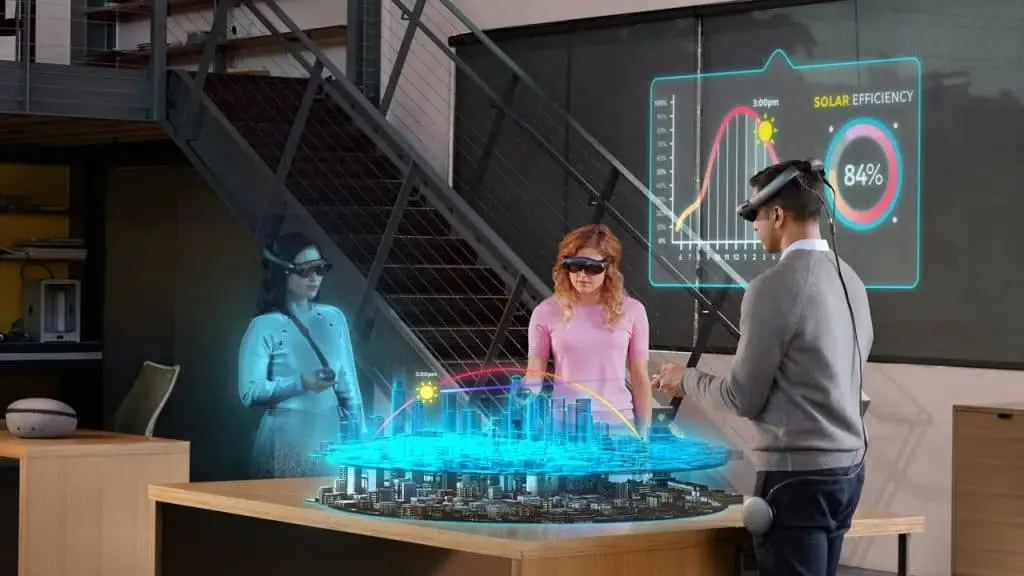
Spatial computing will irrevocably transform how we learn, work, shop, socialize, and are entertained. It will enhance efficiency and lower costs across industries as traditional business operations transition to blended physical-digital environments.
For example, spatial computing can help retailers provide personalized recommendations as customers browse aisles, no longer confined to imprecise online purchasing data. Engineers and designers can preview and interact with 3D models overlaid right onto their workspace. Doctors can reference medical imaging scans projected directly onto patients’ bodies during examinations.
Spatial computing will also enable more immersive communications through hyperrealistic virtual interactions and augmented meetings that enhance nonverbal cues. Imagine business negotiations or family gatherings with participants spread across the globe but still sitting around the same virtual discussion table.
The gaming industry will drive mainstream adoption of consumer spatial computing until it is phased into the background as an ambient, ever-present utility. VR metaverse platforms like Meta’s Horizon World illustrate this creative interactive future.
The enterprise sector will quickly integrate spatial computing to improve operations and training. TrinityVR recently partnered with Walmart for AR/VR simulations to educate retail associates. Spatial computing reduces costs by minimizing dangerous real-world trials. Trainees can prepare for high-risk scenarios like emergency response, complex machinery operations, and surgery through low-risk simulation.
Technological Building Blocks Now Falling into Place
While pop culture envisioned advanced alternate realities for decades, real-world spatial computing is only now possible because of progress across multiple tech sectors. Affordable augmented/virtual reality headsets provided early glimpses into spatially immersive computing. Omnichannel interfaces enabled multimodal user engagement, blending touch, voice, and spatial gestures. Networks upgraded to support persistent shared virtual environments instead of just media streams. Most importantly, AI and computer vision reached sufficient sophistication to understand spatial contexts and respond accordingly.
These building blocks have sufficiently matured, allowing the industry’s top minds to construct the open spatial computing platforms necessary to support widespread adoption. For example, Nreal unveiled NEOSMART GLASSES to deliver a consumer-grade AR heads-up display experience comparable to sci-fi visions. Leading tech giants Meta, Microsoft, Google, and Apple now have mature AR/VR hardware and software stacks. Verses Technologies recently launched its Universal Realities operating system to connect cross-reality experiences. The solutions for enterprises to deploy spatial computing are now readily accessible. Over the next five years, the companies that weave these solutions into core business processes will gain a distinct competitive advantage.
Immersive Shopping & Augmented Marketing
Consumer spatial computing could produce an annual revenue opportunity exceeding $1.5 trillion by 2030, according to PwC analysis. Apparel brands and retailers will drive early adoption with immersive shopping, changing how customers evaluate products.
For example, Gucci launched an in-store AR experience, allowing users to try on sneakers digitally. Home goods retailers like Wayfair and IKEA implemented AR apps to visualize products in shoppers’ living spaces. Luxury brand Moncler created a virtual store in Roblox to promote its clothing to gamers.
Spatial computing provides brands with direct engagement channels with shoppers. Marketers can integrate AR try-ons and visualization to lower purchase barriers. Gamified virtual storefronts present unique opportunities to express brand identities creatively.
PwC anticipates AR and VR advertising collectively growing into a $46 billion industry by 2026. Targeted augmented signage and immersive brand activations will revolutionize out-of-home media. For example, a tourist glancing at a landmark could receive an AR overlay advertisement for a nearby restaurant. Spatial computing enhances marketing by delivering contextually relevant messaging directly into a target customer’s environment.
The Creative Economy in Alternate Realities
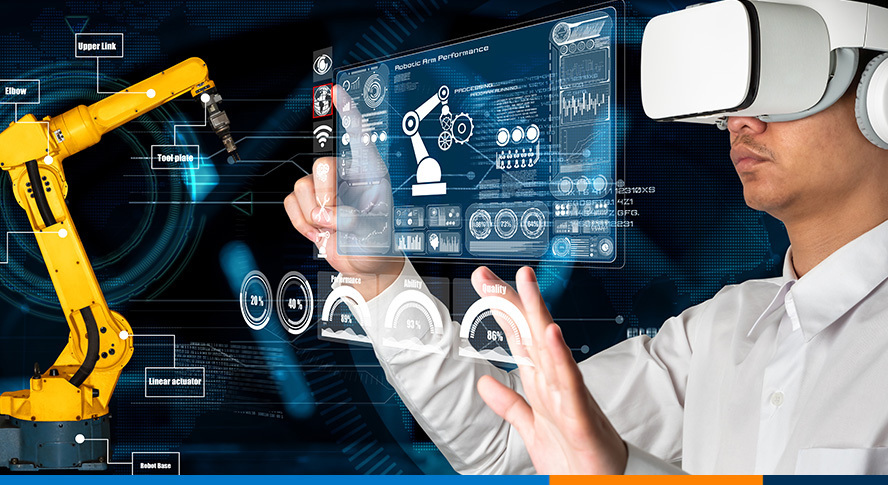
The creative industries will also greatly expand markets into virtual spaces. Digital asset ownership authenticated on blockchains allows creators to market unique virtual goods and experiences. Virtual real estate in blockchain-based metaverse platforms like Decentraland and The Sandbox has already sold for millions of dollars.
Artists have also earned tens of thousands selling purely digital artwork as non-fungible tokens (NFTs). Musicians routinely perform interactive virtual concerts on platforms like Roblox, Fortnite, and VRChat. The volume of user-generated content will exponentially increase as consumer spatial computing penetration grows.
Entire virtual economies that produce, market, and trade digital assets will emerge around these creative platforms. The digital creators participating now will gain loyal followings as their networks grow. They have the first-mover advantage in defining the highest-value niches, from augmented fashion design to mixed-reality gameplay streaming.
Training and Simulation Systems
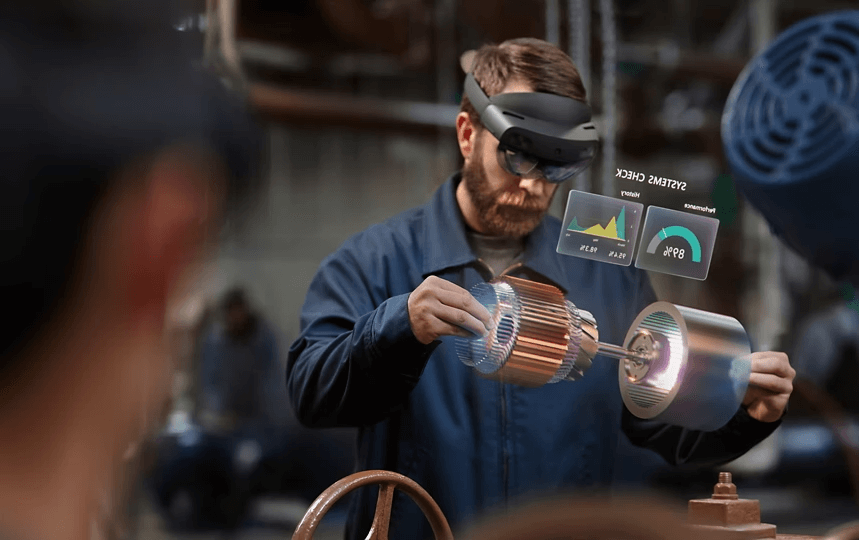
While creative fields pioneered many consumer use cases, industrial spatial computing will ultimately deliver a much higher return on investment for enterprises. Industrial mixed reality expenditures across manufacturing, warehouse operations, and job training will reach almost $12 billion per year by 2030, according to an analysis by MarketsandMarkets.
Deploying spatial computing solutions upstream cuts costs and risk downstream. Spatial computing improves product design cycles with AR prototyping and VR simulation, substituting physical mockups. Products enter the market faster and require less post-production remedy work. Engineers spot design flaws earlier by directly manipulating virtual models before any hard tooling and fabrication expenses.
Walmart now mandates VR training programs for store management to improve retail skills like empathy, leadership, and change management. Trainees receive visual feedback on nonverbal cues and speech analysis while interacting with virtual customers and associates. These soft skills are difficult to teach otherwise but critically impact client relationships and team performance.
Manufacturers utilize AR-assisted workplace augmentation to reduce assembly and inspection error rates. Spatial computing guides production workers through best practice processes by visually projecting step-by-step instructions directly onto worksites. This practical integration of augmented workflows results in faster job training and fewer defects and workplace accidents.
Logistics companies also wring major operational advantages from spatial computing-enabled digital twin warehouses. Dynamic inventory is tracked in real-time using sensor fusion while AI optimizes storage locations and picker routing. Operations managers have complete visibility with AR dashboards displaying actionable analytics overlaid onto facilities rather than monitoring desktop screens. Early logistics tech adopters gain very material direct cost reductions and competitive differentiation.
Becoming an Early Spatial Web Adopter
The window to harness first-mover advantages rapidly closes as spatial computing crosses the chasm from early adoption to mainstream integration. Companies not actively experimenting with these technologies today already risk disappearing tomorrow. Creative destruction accelerates as the spatial web reshapes consumer behavior and enterprise operations.
Businesses must develop strategic roadmaps for deploying spatial computing-based solutions now, even if select applications remain aspirational, awaiting further ecosystem maturation. Organizations should tap into the growing pool of expertise from AR/VR agencies to construct hyperrealistic simulations and engaging customer experiences.
The economic incentives are astronomical – potentially trillions of dollars as physical transactions migrate to blended digital spaces. The customers themselves will increasingly demand spatially immersive, interactive experiences.
Businesses that embrace this transition will see outsized gains while simultaneously moving human-computer interaction to new heights. Just as the graphical user interface expanded accessibility beyond coding pioneers three decades ago, spatial computing will make digitally augmented physical reality available to the masses today.










